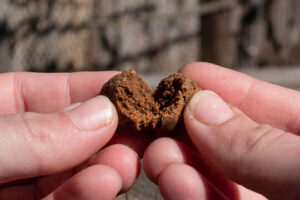How to properly plant trees in your garden

If you want to add different levels to your garden or want to create some shade for the warmer months, you might be considering planting a tree. Trees are a beautiful way to give back to the planet and add depth to your garden. But while planting a small shrub or evergreen might appear to be as simple as digging a hole and putting it in, there’s a little more needed to properly plant a tree if you want to encourage good growth and maintain the structural integrity.
Below are some top tips for properly planting trees, so you can enjoy them for years to come.
Plant in the autumn
The best time to plant a tree is during the autumn. In the summer, trees and plants don’t have time to adapt to the hotter temperatures and as such, can quickly dry out or die. Whereas in autumn, it can switch between warm and cold in an instant, so this gives the tree more time to get used to the soil before the summer or winter arrives.
Watch out for the house foundations
As a tree’s roots grow far and wide through the soil, it’s important to give it enough room to spread. Smaller trees which are classed at those 30 feet tall or less, can be planted about 10 feet away from the house. Larger trees will need to be planted further away so as not to damage the house’s foundations and to prevent the tree from growing lopsided.
Dig a bigger hole
Before diving in, make sure you’ve got the correct landscape materials for the job. You’ll need to be able to dig a hole that’s at least two or three times the size of the pot your tree came in. The hole will also need to be as deep as the pot so that the tree will be level with the ground’s surface when planted.
Once the tree is in place, take a step back to see where the best side is facing. You can turn the tree in the hole so that the best side faces the house or the street – depending on your preference. Be sure to move the tree from the bottom. Do not just twist the trunk.
Use loose soil
Fill the hole back with the soil you just dugout. As long as the soil is of reasonable quality, you shouldn’t have to invest in compost or other specialist soils – studies show there’s very little benefit. Pat the soil down around the trunk, but don’t compact it too much – you still want water, nutrients, and air to be able to reach into the ground. Loose soil also gives the roots plenty of space to grow.
Ongoing maintenance & care
You do not need to fertilize or feed your tree when it’s first planted. Just a little splash of water will do the trick. If you want to encourage better growth, wait till the following year, so the tree has time to get settled.
To help keep the tree in place in its infancy, use a tree stake and tie the trunk to it. This should only need to support the tree for the first six months. Then, you’ll have a tall, standing, beautiful tree to enjoy with a sense of satisfaction that you did it yourself!








